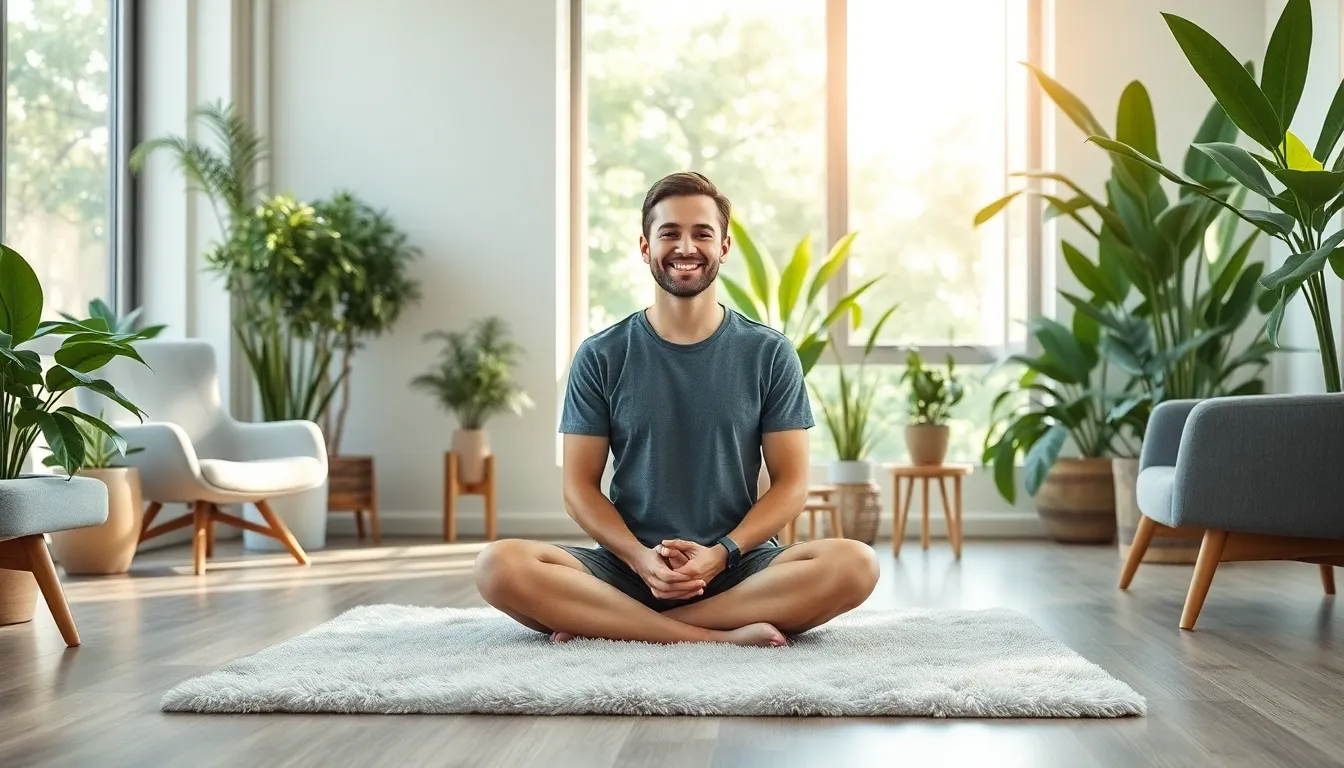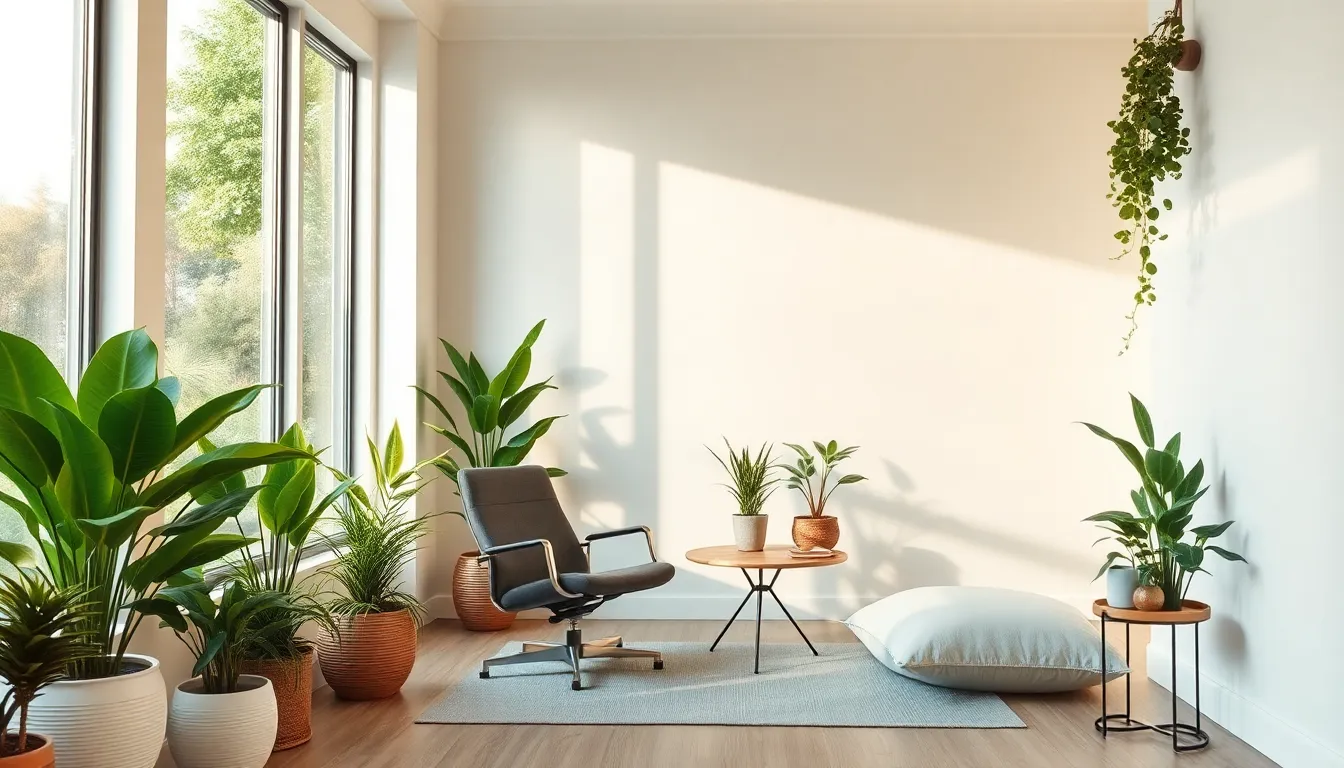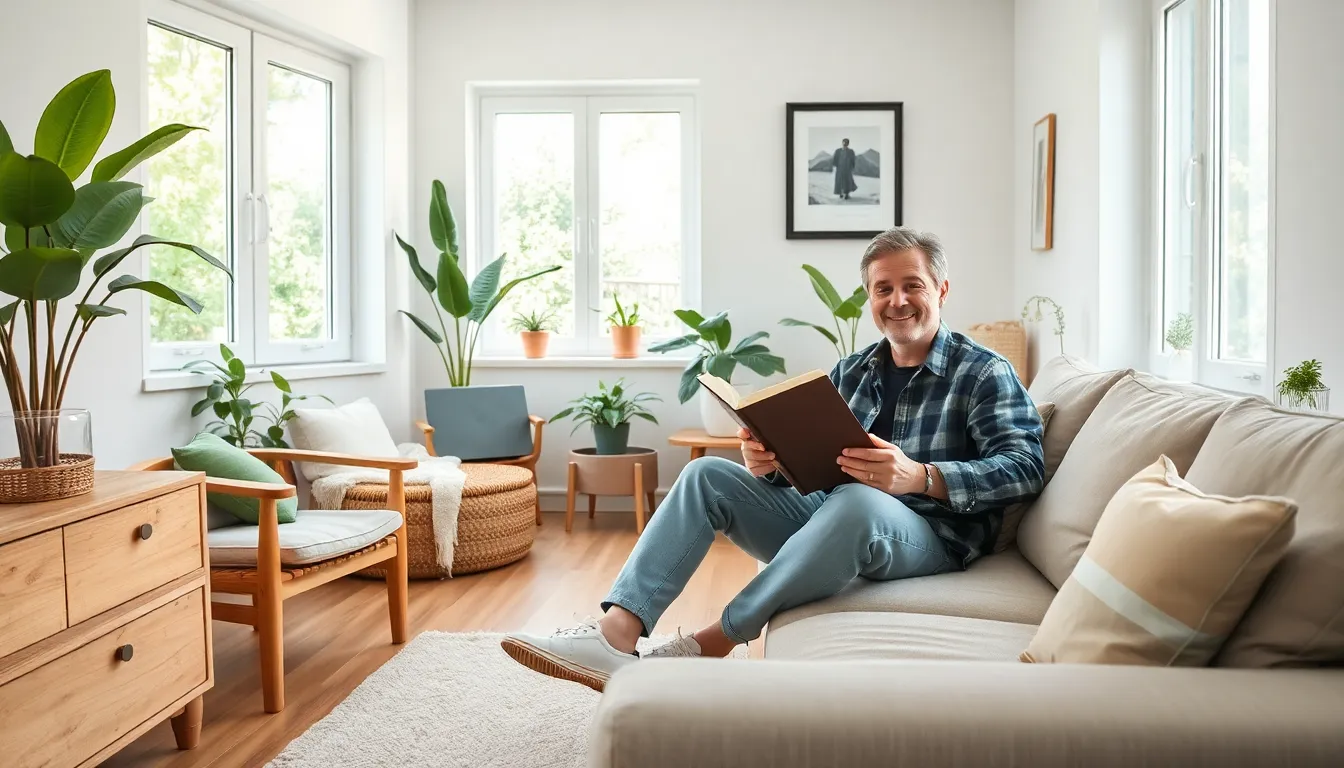In today’s fast-paced world, finding a sanctuary at home is more crucial than ever. Wellness interior spaces are the perfect antidote to stress, transforming ordinary rooms into personal retreats that promote relaxation and rejuvenation. Imagine stepping into a space that not only looks good but also makes you feel good. It’s like giving your home a spa day—without the cucumber slices on your eyes.
Table of Contents
ToggleOverview of Wellness Interior Spaces
Wellness interior spaces focus on creating environments that promote physical and mental well-being. These spaces transform ordinary rooms into sanctuaries that support relaxation and rejuvenation.
Definition and Importance
Wellness interior spaces refer to areas designed to enhance health and well-being. These spaces prioritize aspects like light, air quality, and natural materials. Importance lies in their ability to reduce stress and improve overall quality of life. A well-designed environment can influence mood, productivity, and health. Research shows that exposure to natural elements boosts mental clarity and emotional balance.
Key Elements of Wellness Design
Key elements of wellness design include biophilic design, natural lighting, and proper acoustics. Biophilic design incorporates plants and natural materials, creating a connection to nature. Natural lighting enhances the ambiance and improves mood. Proper acoustics minimize noise and distractions, promoting a calming atmosphere. Incorporating these elements creates spaces that foster well-being and comfort.
Benefits of Wellness Interior Spaces

Creating wellness interior spaces promotes overall health and enhances the quality of life. Emphasizing physical and mental well-being, these environments offer numerous benefits.
Physical Health Improvements
Enhanced indoor air quality directly affects physical health. Many wellness designs incorporate natural ventilation, ensuring fresh air circulation that reduces allergens and other pollutants. Access to natural light provides essential vitamin D, which supports bone health and boosts immunity. Incorporating materials free from harmful chemicals contributes to a healthier living environment. Many wellness spaces also feature ergonomic furniture, which promotes better posture and reduces musculoskeletal pain. This combination of elements leads to an overall improvement in physical well-being.
Mental Wellbeing Enhancements
Natural elements play a significant role in enhancing mental well-being. Incorporating plants into interior spaces can reduce stress levels and elevate mood. Regular exposure to daylight helps regulate circadian rhythms, promoting better sleep and increased focus. Calming colors and textures create inviting atmospheres, fostering relaxation and creativity. Acoustic treatments minimize disruptive noise, further enhancing concentration and peace. Together, these design elements foster emotional balance and a sense of tranquility in everyday life.
Design Principles for Wellness Interior Spaces
Creating wellness interior spaces involves thoughtful design principles that enhance well-being. Attention to detail in various elements fosters relaxation and rejuvenation.
Biophilic Design
Biophilic design emphasizes the connection between humans and nature. This principle incorporates plants, water features, and natural light into interior spaces. Research shows exposure to greenery significantly reduces stress levels and enhances focus. Incorporating large windows allows for abundant daylight, improving mood throughout the day. Various plants also purify indoor air, contributing to better overall health. Elements such as nature-inspired art further reinforce the calming effects associated with biophilic design. Transforming spaces with these natural elements creates a harmonious environment that supports mental clarity.
Use of Natural Materials
Using natural materials in interior design promotes a sense of warmth and health. Materials like wood, stone, and organic textiles create a tactile and inviting atmosphere. Natural wood fosters a connection to the environment while adding a timeless aesthetic. Stone surfaces not only add visual interest but also enhance indoor air quality. Organic textiles, such as cotton and linen, provide comfort and breathe well, improving personal wellness. Choosing sustainably sourced materials further enhances the environmental benefits. This focus on natural elements in interior design leads to spaces that support physical and emotional well-being.
Case Studies of Wellness Interior Spaces
Exploring case studies reveals the practical application of wellness interior design principles in various settings. These examples highlight the effectiveness of intentional design.
Residential Examples
One notable residential example features a home designed around biophilic principles. The incorporation of living walls and large windows encourages abundant natural light, creating a serene atmosphere. Families report improved moods and reduced stress levels due to these features. In another case, the use of organic materials like bamboo flooring and wool textiles enhances comfort and promotes better indoor air quality. Calming colors also contribute to a peaceful environment, aiding relaxation.
Commercial Applications
Commercial spaces also benefit from wellness interior design concepts. An office redesign focusing on natural light and open spaces led to increased employee satisfaction and productivity. This office incorporated greenery, such as potted plants and hanging gardens, which helped improve air quality and foster creativity. A wellness-focused gym features large skylights and eco-friendly materials, enhancing users’ experiences while promoting physical health. Both examples emphasize the importance of creating environments that prioritize well-being and support overall health.
Future Trends in Wellness Interior Spaces
Emerging trends in wellness interior spaces point toward a stronger focus on sustainability and technology integration. Designers now emphasize eco-friendly practices that enhance both aesthetics and environmental health.
Sustainability and Eco-Friendliness
Sustainability in interior spaces encompasses the use of renewable materials like bamboo and reclaimed wood. Incorporating energy-efficient lighting not only reduces utility costs but also lowers environmental impact. Green building certifications are becoming increasingly relevant, guiding designers toward eco-conscious choices. Indoor plants improve air quality, actively contributing to a healthier living environment. Utilizing non-toxic paints and finishes ensures that indoor air remains safe, supporting overall well-being. Prioritizing responsible sourcing further connects wellness design to environmental stewardship.
Technology Integration
Technology now plays a pivotal role in promoting wellness within interior spaces. Smart home systems enhance comfort through customizable lighting and temperature control. Incorporating air quality monitors allows individuals to track pollution levels, ensuring a healthier living environment. Advanced sound systems can create calming atmospheres with nature-inspired soundscapes, actively reducing stress. Additionally, apps facilitating mindfulness practices make relaxation accessible at any time. Embracing virtual reality offers unique experiences for stress relief and meditation, linking technology and wellness in innovative ways.
Conclusion
Creating wellness interior spaces is more than just a design choice; it’s a commitment to enhancing quality of life. By prioritizing natural elements and sustainable practices, individuals can transform their homes into sanctuaries that foster relaxation and rejuvenation. The integration of biophilic design, natural lighting, and ergonomic furnishings not only improves physical health but also nurtures mental well-being.
As trends evolve, the focus on sustainability and technology will continue to shape these spaces. Embracing these principles leads to environments that support overall health and happiness. Ultimately, investing in wellness interior spaces is a step towards a more balanced and fulfilling lifestyle.





